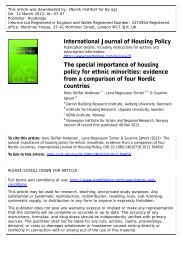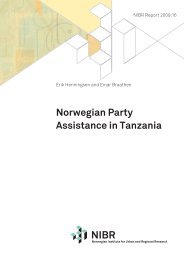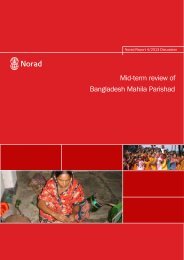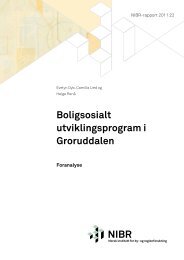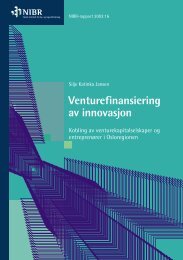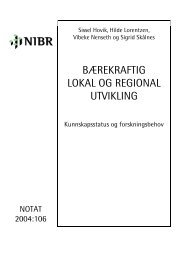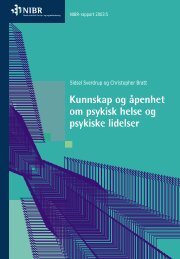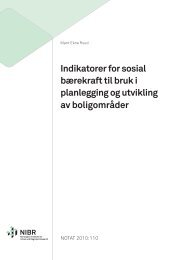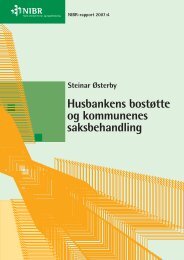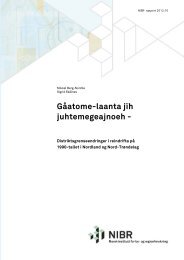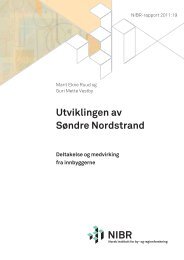Forvaltningsmuseenes og NIKUs ansvar og roller i forvaltningen av ...
Forvaltningsmuseenes og NIKUs ansvar og roller i forvaltningen av ...
Forvaltningsmuseenes og NIKUs ansvar og roller i forvaltningen av ...
- No tags were found...
You also want an ePaper? Increase the reach of your titles
YUMPU automatically turns print PDFs into web optimized ePapers that Google loves.
22management are attended to. Four of Norway’s five universitiesare also centres of archaeol<strong>og</strong>ical training; objects in theirpossession can therefore be used for training purposes or as astarting point for the writing of a Master’s thesis, etc.The resulting close connections between administrativeassessments and scientific research can strengthen the sciencebaseddynamics of the archaeol<strong>og</strong>ical work on which one is totallydependent to move the academic boundaries and establish newscientific knowledge in the area.This opportunity to latch scientific research onto the performanceof administrative tasks is, arguably, a particular advantage of theway the universities’ administrative responsibilities are organized,given the difficulties facing the independent maritime museumsand NIKU to fund the study of artefacts and sites under heritagemanagement. This speaks to the basic raison d’être for carrying outadministrative archaeol<strong>og</strong>ical assessments. Inasmuch as the issue isthe preservation of scientific source material, it is particularlypositive that a well-established research body is directly involved inthe collection of material.The economic situation of the maritime museums as independenttrusts is far more precarious. This impacts the conservation of shipfinds and automatically listed underwater artefacts. Only theNorwegian Maritime Museum can be said to h<strong>av</strong>e created a widerresearch community in the field. Diminishing basic allocationsfrom the Ministry of Culture complicate the prioritization ofartefact conservation and research to a degree not unlike that seenat the university museums. There would appear, in other words, tobe an opportunity here to strengthen this part of the system ofheritage management.The involvement of the regional authorities in the management ofNorway’s cultural heritage must be seen as a particularly fortunatecircumstance. It facilitates the building of a regional body ofexperience and knowledge, which can be a great asset since theadministrative museums and NIKU are tasked with monitoringand conducting field surveys.On the other hand, the involvement of the regional authoritiescould become a challenge if their regional responsibilities expandtoo far.NIBR-rapport 2012:30



